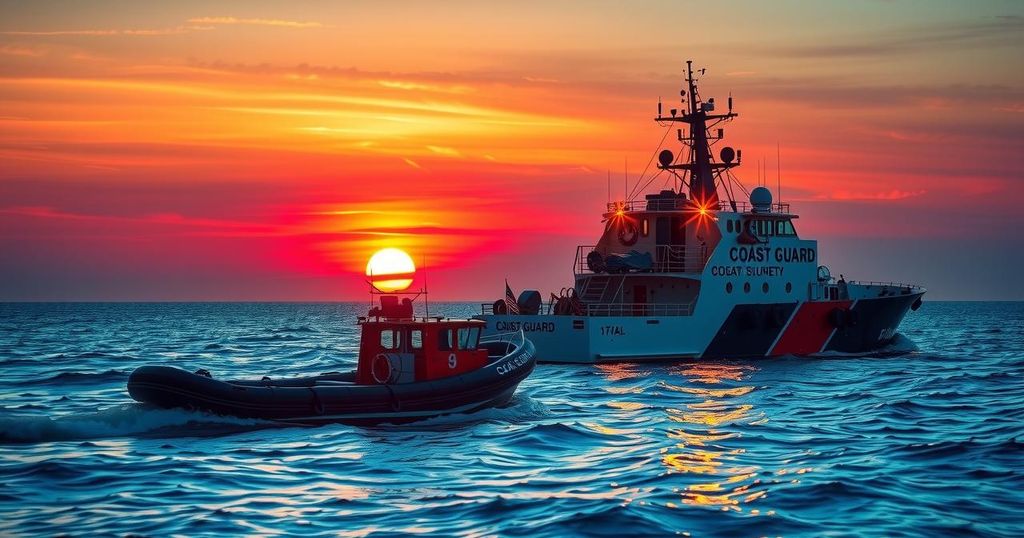U.S. Coast Guard Safely Tows Lucky Harvest to Guam After Mariner Rescue

The U.S. Coast Guard successfully towed the Lucky Harvest to Guam after a rescue operation that occurred May 17. The vessel’s electrical failure stranded two mariners, who were quickly located with the help of an Emergency Position Indicating Radio Beacon. All parties involved, including local and military agencies, ensured the safe return of the crew.
In a successful rescue operation, the U.S. Coast Guard towed the 47-foot vessel Lucky Harvest to safety at Hagåtña boat basin in Guam, arriving shortly after 8 p.m. on May 17, 2025. The vessel was located on May 16, approximately 125 nautical miles west of Apra Harbor, with two mariners aboard due to an electrical failure.
During this response, the crew of USCGC Myrtle Hazard (WPC 1139) took on the tow operation, eventually transferring the vessel to a station Apra Harbor 45-foot Response Boat-Medium crew and the Sector Boarding Team near Apra Harbor. This final leg of the journey lasted roughly 2.5 hours and followed a more extended transit of about 28 hours from the initial scene, where they were met by the owner of the vessel along with representatives from Guam Customs and the Quarantine Agency.
A crucial factor in the timely rescue was the activation of the Emergency Position Indicating Radio Beacon (EPIRB) by the mariners, which occurred at 6:30 a.m. on May 16. This allowed the Joint Rescue Sub-Center Guam to quickly determine the vessel’s location. A U.S. Coast Guard HC-130 Hercules aircraft from Air Station Barbers Point, Hawai’i, was the first responder on-site, followed closely by a U.S. Navy MH-60 Knighthawk helicopter crew. By 9:30 a.m., one mariner had been hoisted to safety.
The Hercules aircraft remained on site until the arrival of the Myrtle Hazard crew, who safely retrieved the second mariner and initiated the tow to Guam. Upon arrival, a routine post-search-and-rescue boarding was performed by the Sector Boarding Team, finding no negative issues with the vessel.
Previously reported missing after leaving Alamagan Island in the Commonwealth of the Northern Mariana Islands on May 12 while en route to Saipan, the incident illustrates how critical EPIRBs can be in emergencies. Cmdr. Patton Epperson, acting as the search and rescue mission coordinator, commented, “The locator beacon enabled our rapid response, bringing the mariners to safety within hours.”
As National Safe Boating Week approaches, the U.S. Coast Guard is reminding mariners to use lifejackets, carry distress signal devices, file float plans, and seek help before situations escalate. The operation was supported by local agencies, including the CNMI Department of Public Safety, a U.S. Navy P-8 Poseidon airplane from Kadena Air Force Base, as well as the crew of the motor vessel Mama Loling. Weather conditions were challenging, with east winds at 15 knots and seas reaching heights of up to 6 feet, later settling between 2 to 3 feet. Investigations into the cause of the electrical failure and the delay in activating the beacon are currently underway.
Overall, the successful rescue of the Lucky Harvest underscores the effectiveness of emergency signaling devices like EPIRBs. The cooperation among various agencies highlights the value of readiness and teamwork in maritime safety. The U.S. Coast Guard continues to advocate for maritime safety as National Safe Boating Week draws near.
Original Source: www.pacom.mil







